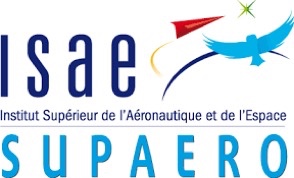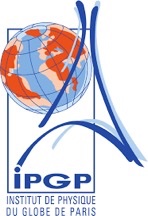The PIONEERS Consortium
The PIONEERS consortium is led by ISAE-SUPAERO (France) and involves industry and research institutes from four different European states. The interdisciplinary team consists of the 5 research organisations ISAE-SUPAERO, LMU (Germany), ROB (Belgium), ETHZ (Switzerland) and IPGP (France), and the industrial company exail (formerly iXblue, France). All partners have an extensive expertise in the field of planetary observation and have been previously involved in several European and national R&D collaborative projects, such as InSight and ROMY.

| Partner | Expertise | Role |
|---|---|---|
| ISAE-SUPAERO France |
SSPA team of ISAE-SUPAERO is strongly involved into both scientific research and instrument development for planetary geophysics (technical projects INSIGHT, Mars Mircophone, EntrySat… but also scientific projects SEISMARS, leadership of an international team supported by ISSI on lunar seismology…). Concerning the instrument development, SSPA team just delivered a microphone (sensor + electronics) for integration into the SuperCam instrument on board Mars 2020 NASA mission. In addition, the team is currently leading the integration and space qualification of ISAE-SUPAERO CubeSat EntrySat. Consequently, the team possesses the skill, process and facility to integrate, test and qualify space hardware. Concerning the instrument performances, D. Mimoun is leader of SEIS INSIGHT noise model including instrument and environment noise modelling. In addition, SSPA team was strongly involved into performance testing of SEIS/INSIGHT instrument in Earth conditions (transfer function, noise and sensor alignment estimates), and applied similar tests and analysis for Mars microphone and infrasound instruments developed by the team. Concerning system design of instruments and CubeSat standards, SSPA team is leading the system analysis and design of EntrySat CubeSat mission and platform. For planetary missions, the team was involved in 2 preparatory phases funded by ESA and CNES to investigate asteroid seismology. D. Mimoun is also co-author of a KISS report (JPL/Caltech) on the Venus internal structure investigations by seismological method. This report is currently driving the mission concept studies (balloon and orbiter) on-going at JPL, in which SSPA team is involved. Concerning scientific research in planetary seismology, R.F. Garcia is currently leading an international initiative supported by ISSI Bern and Beijing institute to provide a unified seismological data set and internal structure model of the Moon from Apollo mission data and to support future geophysical deployments on the Moon. The final aim of this initiative is to create an international scientific team pushing for international cooperation at Space Agency level for future seismological deployments on the Moon. In addition, SSPA team members prepared the scientific return of INSIGHT mission in various research directions: imaging of sub-surface through atmosphere/solid interactions, modelling of infrasounds and gravity wave propagation in Mars atmosphere, determination of Mars love numbers through tide detections by SEIS instrument, co-leading of Mars Quake Service for event locations... Finally, SSPA research is also directed into internal structure imaging of asteroids and an experiment allowing to reproduce rebounds in micro-gravity is available at ISAE-SUPAERO. | ISAE-SUPAERO is the PIONEERS project leader, leads WP4 and 5, and is in particular involved in
|
| ROB Belgium |
ROB has a long heritage of research in geodesy, in particular in the astronomical and geophysical causes of rotation variations of the Earth and solar system bodies including terrestrial planets (Mars, Venus, Mercury), moons, asteroids and comets. ROB is involved in current (InSight, ExoMars) and upcoming planetary missions (JUICE Bepi-Colombo) and actively contributes to the development of new missions with the objective of studying the rotation and orientation changes of these celestial bodies and therewith to study their interior. ROB with ISAE-SUPAERO has successfully led the previous AIM/AIDA AGEX phase zero study. ROB is the PI institute for the LaRa (Lander Radio science) experiment, which aim to precisely measure the rotation and orientation of Mars. LaRa has been selected for the ESA-Roscosmos ExoMars mission to be launched in 2020. ROB has been active in public engagement and disseminations. The Planetarium that is part of ROB regularly hosts different events that highlights the research activities and disseminates (Exhibits, conferences, astronomical events, Concerts, Meetings with astronauts…). It hosts the European Space Education Resources Office (ESERO), it is the press contact point for the European Southern Observatory (ESO), and also the coordinator of the Belgian activities for the International Astronomical Union (IAU) and it is involved in many other European educational projects. In collaboration with the scientists involved, the Communication Unit issues regular press releases to the Belgian media. Our research topics and activities have received wide coverage in various media such as TV networks, magazines and daily newspapers, and various reference websites. |
ROB leads WP6 and tasks 1.4 and 5.6. |
| ETHZ Switzerland |
The ETHZ seismology (SEG) and exploration and environmental geophysics (EEG) groups are world-leading research groups in the fields of active and passive seismology, covering a wide variety of topics ranging from numerical and theoretical foundations to instrument developments and field-experiments on local to continental scale in different challenging environments such as on Glaciers, in Greenland, and on instable slopes. Current SEG and EEG group members are involved in a number of geophysical planetary research projects such as Lunar and Martian seismological investigations (Apollo and InSight mission to Mars), and numerical simulation study in preparation of future missions. The EEG group is world-leading in the advancement of multicomponent, spatial gradient and rotational motion measurements for exploration applications. Group members have developed novel technics to improve the understanding of the seismic wavefield using combined translational and rotational motion measurements and to process 6 DoF data for applications such as wavefield separation. For example, the EEG group has extracted, for the first time, S-wave information from the Apollo 17 active seismic data using gradiometry (rotational seismology) tools. Furthermore, the EEG group operates the Center of Immersive Wavefield Experimentation, which is a unique laboratory combining physical experimentation and numerical modelling. The Aerospace Electronics and Instruments Laboratory (AEIL) has eighteen years of experience in developing electronics for space application. AEIL has developed electronics for Mars InSight (NASA; launch in May 2018), LISA Pathfinder (ESA; successfully flown in 2016), Exomars (ESA; up to PDR), SELENE-2 (JAXA; breadboard built), Mars Netlander (CNES; breadboard built)). AEIL is specialized in the design and testing of electronics requiring extreme low noise performances on a wide frequency range extending to very low frequencies. It has a long experience in collaborating with industry in the frame of ESA and NASA missions. | Within WP1, ETHZ contributes to the science requirement definitions with numerical simulations of seismic wave propagation for a range of planetary bodies (telluric planets and moons, ocean worlds, asteroids). Within WP3, ETHZ translates the science requirements into technical specification, support the electronics design, perform the required analysis (parts selection, circuit and parts analysis), implement the space-ready sensor electronics and subject it to field tests building on the field-data acquisition and processing experience of both the EEG and SEG group. ETHZ converts in collaboration with exail the commercial electronics design of exail into a space qualified design by selecting the appropriate components and by providing corresponding design adaptation, where needed. |
| IPGP France |
IPGP has more than 25 years of experience with planetary seismometer. IPGP delivered the flight model of the OPTISM seismometer for MAR 96. IPGP has lead a European consortium for MARS or Moon seismic experiment (NETLANDER / EXOMARS / SELENE 2). P. Lognonné is the PI of SEIS INSIGHT. IPGP was also responsible for the delivery of the VBBs for INSIGHT. THE SEIS VBBS were developed in partnership with an Industrial (SODERN). IPGP was responsible for defining the detailed requirements, the system engineering and the overall architecture/concept of the VBB. SODERN was responsible of the design and manufacturing under close monitoring from IPGP. IPGP provides key parts like the springs. All the tests were done by IPGP. IPGP was also involved in the SEIS system team for its expertise in planetary seismology and in planetary seismometer design. IPGP has also been involved in CNES or ESA R&D projects related to planetary seismometer development. | IPGP leads WP2 and in particular:
A PhD thesis funded by this project is supervised by IPGP and APC. This PhD spends significant time at exail and allows us to benefit from APC expertise in interferometers to oversight exail development. |
| LMU Germany |
LMU has pioneered the observation and analysis of joint rotational and translational ground motions for the past 15 years, first based on ring laser observations. Dozens of studies investigate from a theoretical and partly observational point of view what the potential benefits are for terrestrial and planetary ground motions observations to observe 6 DoF of motion rather than the classical 3 Dof of a seismometer. These studies culminated in an ERC-Advanced grant that led to the first large 4-component ring laser worldwide currently installed at the Munich Geophysical observatory, the most accurate rotational motion sensor to date with applications in geophysics and geodesy. LMU initiated the blueSeis rotation sensor product line, the first-of-its-kind broadband rotation sensor specifically designed for seismology. LMU seismology also pioneered several computational technologies for wave and rupture propagation simulation. For example they were the first to apply the discontinuous Galerkin method to seismic wave propagation, leading to one of the most performant rupture and wave code world wide, winning several prizes at international supercomputing events (e.g., finalist Gordon Bell Prize 2015). LMU seismology provided the specification for the design of blueSeis and tested its properties extensively in the laboratory and in the field (volcanoes, active faults, buildings). This expertise is employed to optimize the design and construction of 6 DoF sensors for space applications | LMU, leader of WP1, provides sophisticated modelling tools to forecast the scientific value of 6 DoF measurements for planetary applications and demonstrates the impact on a variety of inverse problems for the structure and dynamics of planetary objects. It also provides the most accurate reference rotation sensor (ROMY ring laser) for cross validation as well as laboratory facilities to test the weak-motion capability of the 6 DoF space sensors. |
| exail (formerly iXblue) France |
The very special assets of exail for planetology projects are to be already involved both in rotational seismology through its product line blueSeis (www.blueSeis.com), and space applications through its division iXspace manufacturing the Astrix product line commercialized by AIRBUS (1.7 million of cumulated hours ON without any problem). This allows us to have a good understanding and capability to master FOG (Fiber-Optic Gyroscope) technology for space applications. | exail is the leader of WP3 because it brings FOG expertise, in the design, their specification, qualification and understanding of how to adapt them to planetology applications. exail has been chosen by IPGP to lead the optical readout system for the translational sensor (WP2.2) for its expertise in very low noise optical phase measurement acquire with FOG. exail is also a leader for key spatial optical components needed for this system (Electro-optic phase modulators, optical fibers). |







